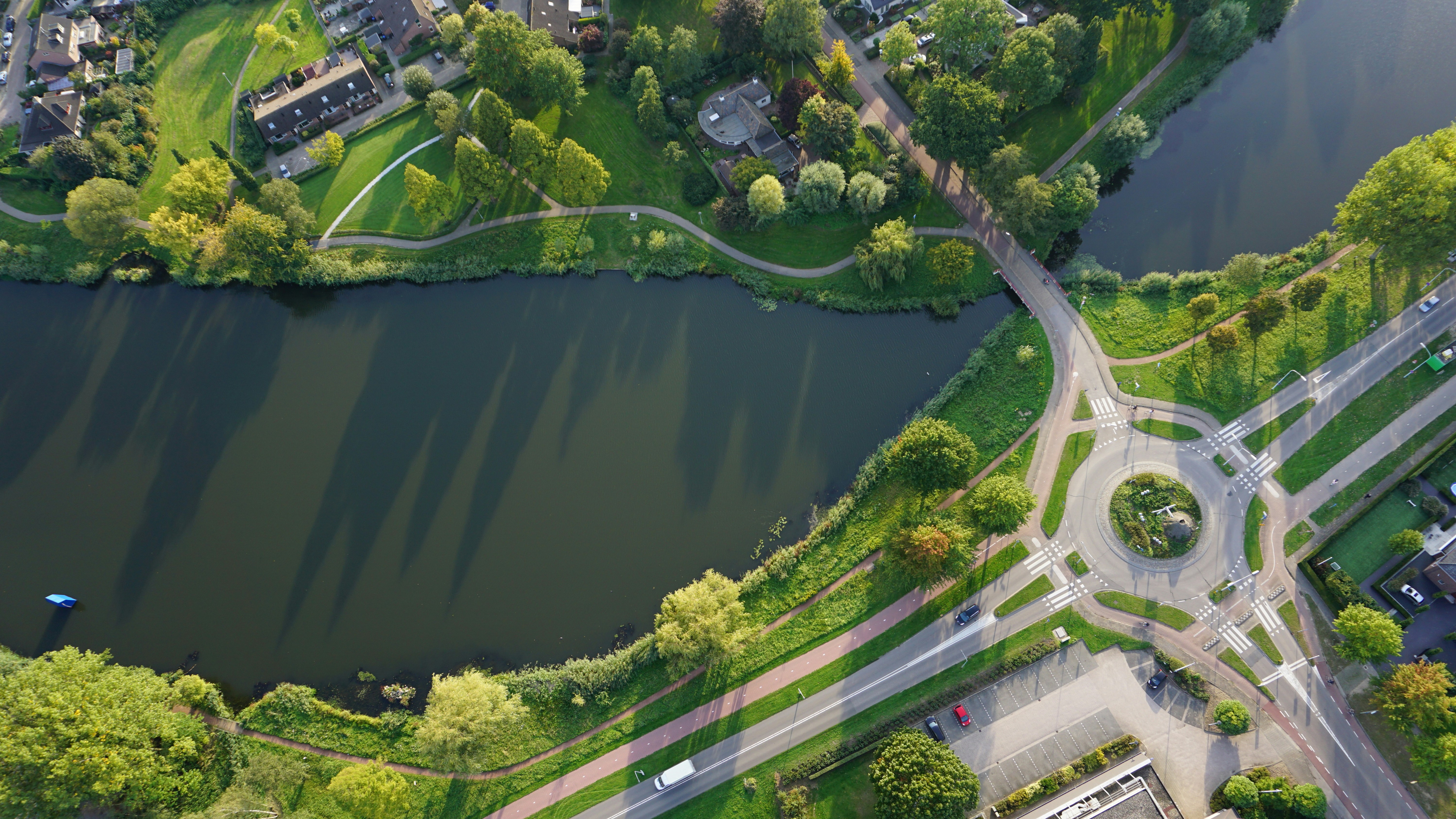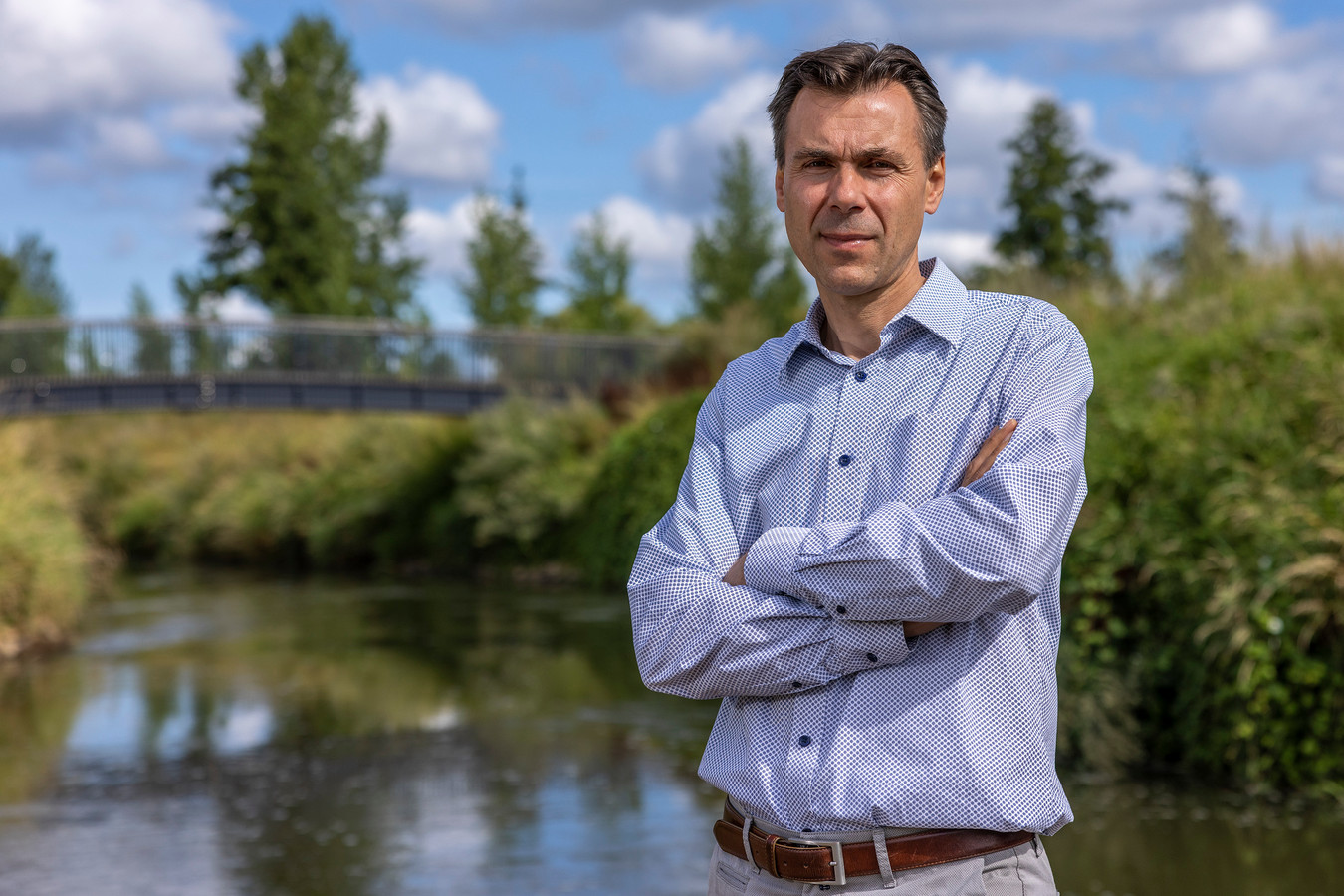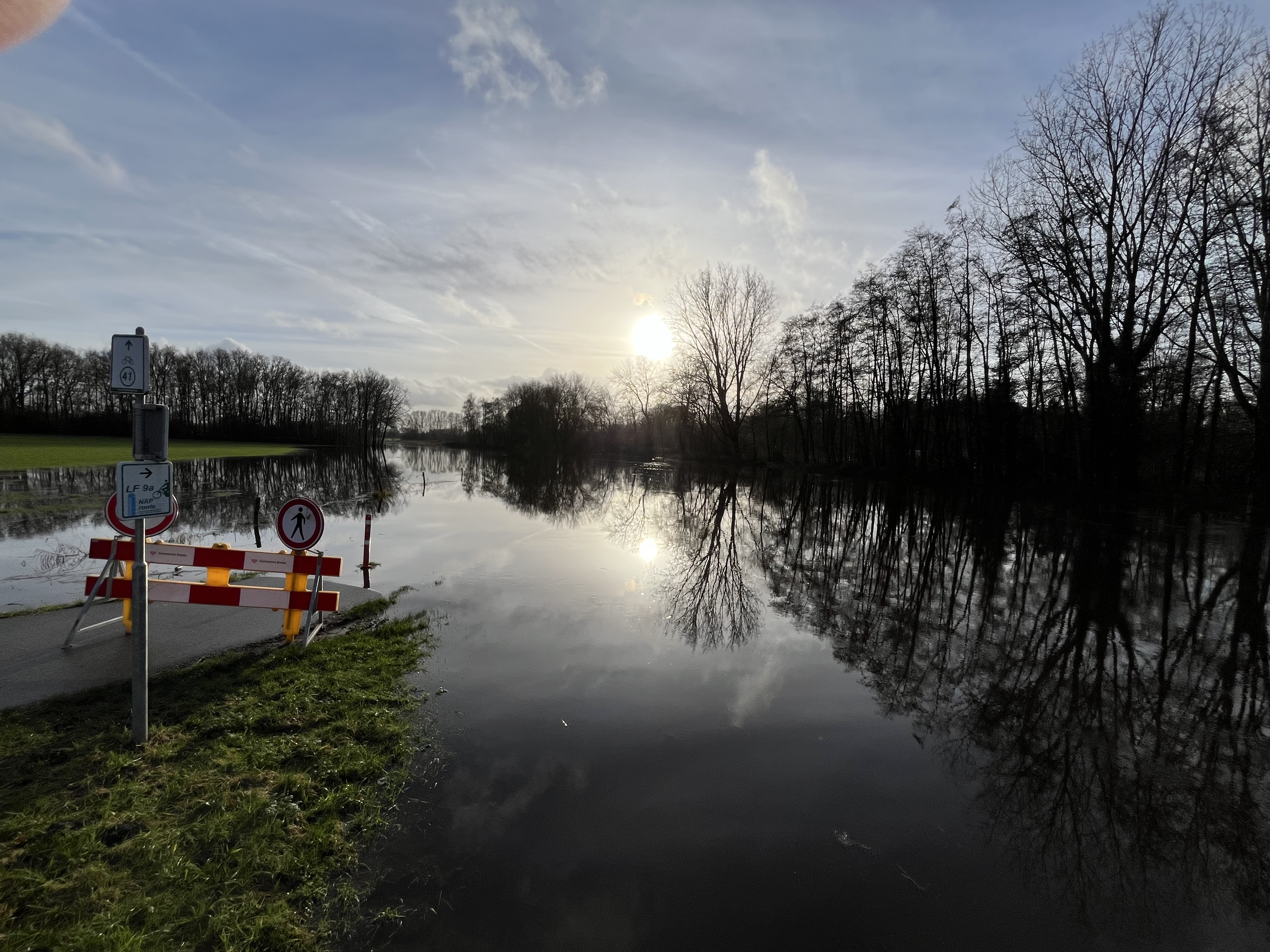
interview with Patrick Willems and Nathalie ASSELMAN
Assessing the resilience of water systems through stress-tests
Understanding the effect of extreme weather events on water systems is essential to curb floods and droughts successfully. Stress-tests are a useful tool to contributing to this understanding. In this article, Patrick Willems from KU Leuven and Nathalie Asselman from Deltares explain stress-tests in more detail.
Defining stress-tests
Together, they form part of an international research team where they work on a joint approach for stress tests that can be applied in regional river basins between Flanders and the Netherlands. Stress tests allow one to check the resilience of water systems, which are under increased pressure due to the consequences of climate change. Climate change leads to more extreme meteorological conditions, such as droughts or heavy rainfall which leads to floods.
Patrick explains how stress tests are conducted: “You use computer models to simulate these extreme meteorological conditions. The model calculates how the system will react to them. You first validate the model by looking at historical events, and then you compare that with the measurements. If these are close to the truth, you then begin to impose even more extreme conditions on that model and to predict the impact based on that. The idea is to see with the end users, such as water managers, whether – if these predictions were to come true – we as a society find those acceptable. That way you can see how stress-resistant our water system is. If it is insufficient, then we look at possible measures to make it more stress-resistant, but that is then the next step.”
Nathalie stresses the importance of a risk approach for the Netherlands and finding the design standards of certain water systems. This can be a 1 in 25 probability of flooding per year, or a probability of 1 in 100. It is, however, important to not only look at design conditions, but also at more extreme events. “We saw in July 2021 that there can always be surprises, that rainfall can occur that is much more extreme than usual. We want to prevent these kinds of extreme situations from surprising us. A stress test helps to give us insight into how water systems react under extreme conditions, to prevent a truly big disaster.” In the Netherlands, the stress test complements the standard risk approach, and its results are meant to facilitate discussion and the creation of possible preventive measures. In combination with knowledge gathered from disaster response plans, they can help warn residents in certain areas or facilitating evacuation.

Proffessor at KU Leuven
Patrick Willems
Patrick Willems is a professor at KU Leuven, with an expertise in surface water management. To make water systems resilient, both for floods and droughts, he works frequently with water system models and performing risk analyses. These are used to find reliable climate adaptation measures and deal effectively with the impact of climate change. “We have about 10 people working on such projects. Some of the projects are pure research, but there are also projects commissioned by, for example, the Flemish government departments on these topics. The research in our group is highly applied and close to practice.”
Specialist advisor on flood risk management at Deltares
Nathalie Asselman
Nathalie Asselman is a physical geographer by background. She started working at Deltares, where she could combine scientific research with practical implementation – something she had missed while working at university as a researcher. As a knowledge institute, Deltares is at the cusp of scientific research and the practical application of new scientific knowledge in all kinds of advisory projects. An example of such projects is the water system analysis Deltares conducted for the water board of Limburg in the aftermath of the July 2021 floods that hit Wallonia, Germany and the Netherlands. “I recently celebrated 25 years at Deltares, so that combination of research and its application in practice suits me perfectly.”

Assess cross-country differences and similarities in household flood adaptation and the effectiveness of such adaptation options.
Partner organizations involved
VU Amsterdam, Université de Liège, GFZ Potsdam
Regions covered by the study
Ahr-tal, Vesdre valley and Limburg
Scope & objectives
Following the 2021 European floods several independent data collection initiatives were undertaken in the affected regions of Belgium, Germany, and the Netherlands. The resulting object-level datasets contain valuable complementary information on hazard characteristics, vulnerability of exposed assets, and socio-economic factors which drive the adaptation capacity of the households and communities. So far, these datasets were analysed independently or in subsets; but no previous study aimed at extracting new scientific understanding from the fusion of all existing datasets. Such a holistic view offers the potential to strengthen the robustness and statistical significance of previous analyses, unveil new knowledge on flood damage mechanisms, reveal significant patterns between regions (in terms of hazard, vulnerability, damage, and coping capacity), and disclose possible bias resulting from data being collected at different periods and by different means (e.g., in-person vs. online surveys). It will also contribute to establish a common ground for subsequent analyses, such as upgrading flood damage models, assessment models to simulate the effect from adaptation and fine-tuning research questions to be addressed in the scope of the PhD research planned within JCAR-ATRACE (coupling of human-water systems, damage modelling …)
Approach
To cross compare surveys in NL, Ger and Be to assess cross-country differences and similarities in household flood adaptation and the effectiveness of such adaptation actions.
Actions/Tasks
- Systematic comparison and merging of the questionnaires used in the already conducted surveys;
- Match between variables collected in the various surveys to generate one harmonized dataset;
- Data exploration, descriptive statistics, and analysis (features extraction, regressions …) predominantly based on regression methods;
- Description of the main drivers of household flood adaptation in the three countries.
Outcomes/expected outcomes
Dissemination of the study results through a joint scientific paper
Next events/actions in the next 6 months
...
Thijs Endendijk
PhD student, VU Amsterdam
Current developments
The team is currently working on a transboundary report for the catchment area, to determine what is already known through previous studies and whether this knowledge can be used for this specific purpose, as well as identifying the important water managers in the area. From the Flemish side, Patrick and his team started last year, which is now being supplemented by Nathalie and her team on the Dutch part of the river basin. This allows them to get a cross-border overview of the functioning of the water systems, their main problems, and the measures that have already been taken. Nathalie explains the follow-up: “After this, we will conduct additional analyses with available models or improved models to perform the stress tests. In the Netherlands, for example, we have a standard rainfall event of 200mm in 48 hours that is applied in all stress tests. This will most likely be calculated through, but in Flanders there may be other standard events that will be explored. We will discuss that together.”
Flooding and drought used to be viewed as two separate phenomena in the Netherlands, but in recent years it has become increasingly clear that these are two sides of the same coin. That is why stress tests are now being conducted simultaneously for both events, something that may have been common practice in Flanders for some time. Patrick adds to that: “We also examine the differences in methodologies between the Netherlands and Flanders, because we do have different traditions with regards to how we model the entire system. Not just which rainfall events are calculated, but also the way the processes in the water system are represented and possible measures are calculated. Which exceptional events will we take into account, and how? You learn a lot from each other that way.”

Lessons from Weerbaar Waterland
Patrick Willems has quite some experience dealing with floods, as he also worked on the advice of Weerbaar Waterland (resilient waterland) as part of an expert panel. This advice was written in response to the disastrous floods that hit Wallonia, Germany and the Netherlands in July 2021, and serves as a means to help prepare Flanders for extreme rainstorms and floods in the future. Patrick elaborates on the main recommendations that came from the report: “We need to arm ourselves better against these kinds of extremes. The following steps should be taken systematically for each river basin:
- What are the current and future risks regarding droughts and floods?
- What do we consider acceptable and unacceptable risks? Finding a consensus in discussion with stakeholders is important.
- Define clear targets: if we want to make those risks acceptable, what is the minimum that needs to be done to achieve that? This could include reducing a minimum percentage of water runoff through more upstream water storage and infiltration and/or creating additional space in the river valley. Additional measures can also be taken, such as raising dykes, should the aforementioned measures be insufficient.”
General preparedness is also important, according to Patrick. “If, under certain circumstances, you would still have to deal with floods, you must ensure that you also have adequate forecasting, warning and evacuation systems, and crisis and intervention plans.”
Additional advice offered by the Weerbaar Waterland report goes into providing sufficient funding as well as making water more steerable in spatial policy. Whereas measures in water management were previously formulated top-down by the water manager, in the Weerbaar Waterland report, the panel recommends going for a bottom-up approach. Defining and evaluating the risks together with all stakeholders, such as the agricultural and nature sector, cities, and municipalities, and developing an action programme with solutions supported by those sectors allows for stronger societal support. It was also advised to prioritise nature-based solutions that are good for both floods and droughts, and also offer other linkage opportunities such as reducing erosion and improving water quality and biodiversity.
The value of JCAR ATRACE
Both experts would be satisfied if the stress test is executed successfully and if it prompts governments to cooperate more intensively, both upstream and downstream. Nathalie: “It is strange that we limit the river basin to national borders, while rivers are not stopped by these borders. Instead, we need to tackle this across borders to be as effective as possible. With this stress test, we want to promote this cooperation.” Patrick: “I completely agree. The advice from Weerbaar Waterland is now advice on paper, but it still needs to be tested and the cross-border aspect does need to be tested along with it.”
Nathalie and Patrick consider having knowledge institutes participating as project members on both sides of the border one of JCAR ATRACE's strengths, as it allows for effective knowledge and best practice sharing, based on water management traditions and models that are used in their respective countries. Nathalie: “When we look at water management from the Netherlands, looking from a purely Dutch perspective is not enough. Cooperation between knowledge institutes and governments on both sides of the border increases the chances of success.” Patrick: I totally agree, the important thing is that we learn from this cooperation. I hope this cross-border cooperation between the Netherlands and Flanders will be an example to other regions in Europe and the world.”
